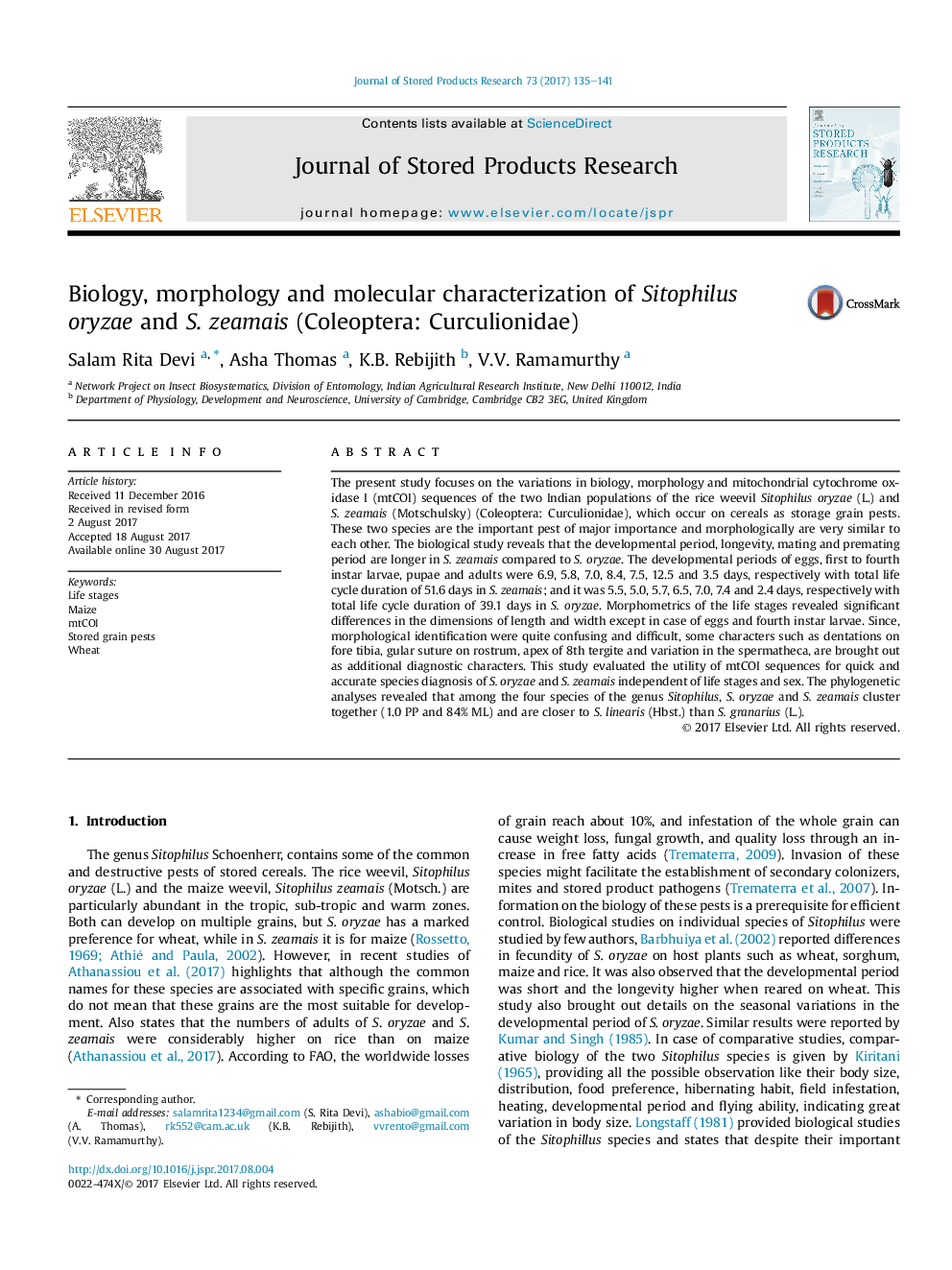| Article ID | Journal | Published Year | Pages | File Type |
|---|---|---|---|---|
| 5762522 | Journal of Stored Products Research | 2017 | 7 Pages |
Abstract
The present study focuses on the variations in biology, morphology and mitochondrial cytochrome oxidase I (mtCOI) sequences of the two Indian populations of the rice weevil Sitophilus oryzae (L.) and S. zeamais (Motschulsky) (Coleoptera: Curculionidae), which occur on cereals as storage grain pests. These two species are the important pest of major importance and morphologically are very similar to each other. The biological study reveals that the developmental period, longevity, mating and premating period are longer in S. zeamais compared to S. oryzae. The developmental periods of eggs, first to fourth instar larvae, pupae and adults were 6.9, 5.8, 7.0, 8.4, 7.5, 12.5 and 3.5 days, respectively with total life cycle duration of 51.6 days in S. zeamais; and it was 5.5, 5.0, 5.7, 6.5, 7.0, 7.4 and 2.4 days, respectively with total life cycle duration of 39.1 days in S. oryzae. Morphometrics of the life stages revealed significant differences in the dimensions of length and width except in case of eggs and fourth instar larvae. Since, morphological identification were quite confusing and difficult, some characters such as dentations on fore tibia, gular suture on rostrum, apex of 8th tergite and variation in the spermatheca, are brought out as additional diagnostic characters. This study evaluated the utility of mtCOI sequences for quick and accurate species diagnosis of S. oryzae and S. zeamais independent of life stages and sex. The phylogenetic analyses revealed that among the four species of the genus Sitophilus, S. oryzae and S. zeamais cluster together (1.0 PP and 84% ML) and are closer to S. linearis (Hbst.) than S. granarius (L.).
Related Topics
Life Sciences
Agricultural and Biological Sciences
Agronomy and Crop Science
Authors
Salam Rita Devi, Asha Thomas, K.B. Rebijith, V.V. Ramamurthy,
